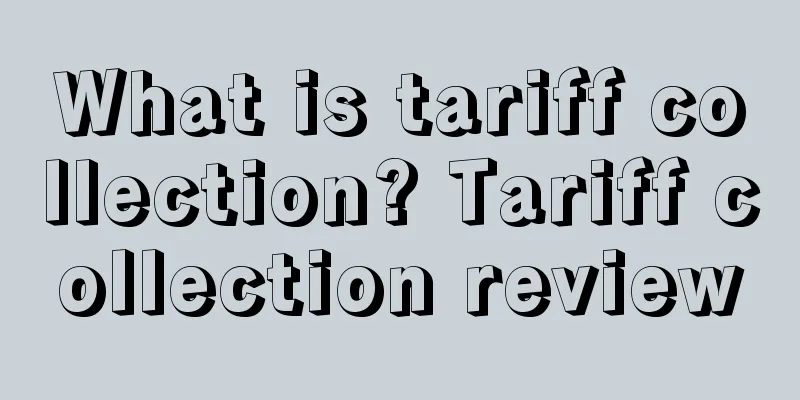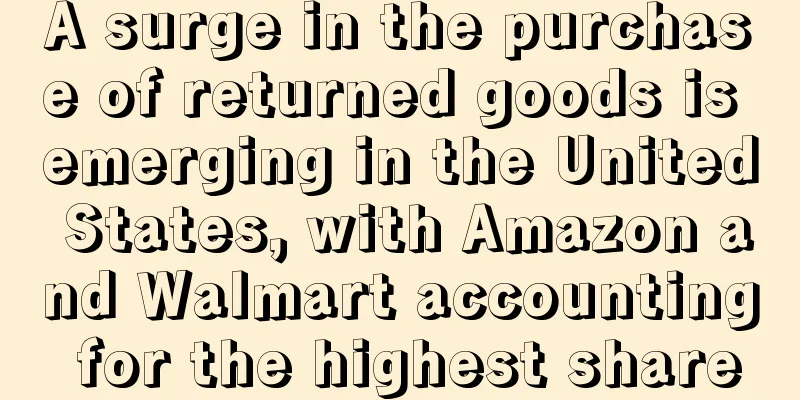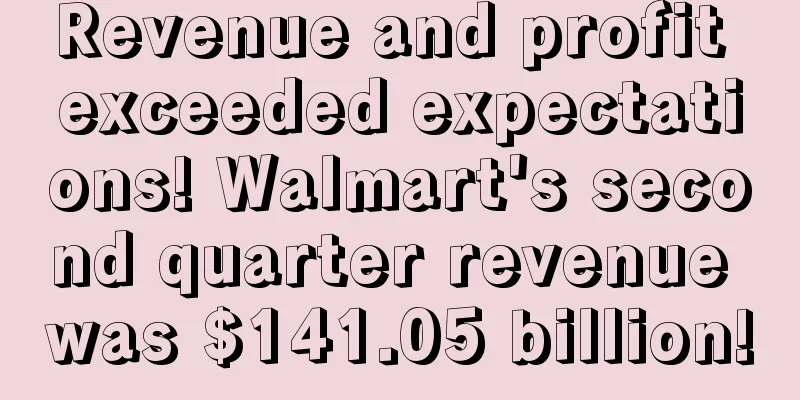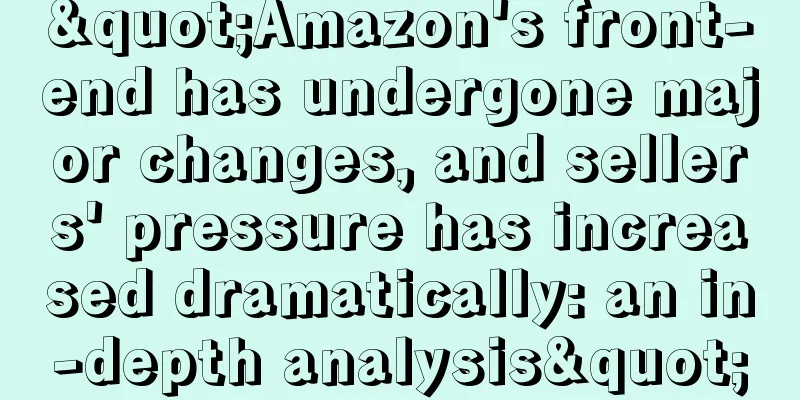What is tariff collection? Tariff collection review

|
Tariffs refer to taxes levied by the government on importers and exporters when goods are imported and exported through a country's borders. Tariff collection refers to taxes levied by the customs on importers and exporters based on the customs tariff. Type Collection form Taxes levied on importers and exporters Chinese name Tariff Collection Foreign name Tariff Collection Meaning refers to taxes levied by the customs based on the customs tariff 1. Basis for Tariff Collection The basis for countries to levy tariffs is the customs tariff. The customs tariff (Customs Tariff), also known as the tariff schedule (Tariff Schedule), is a country's regulations on the calculation of customs tariffs and a list that systematically classifies taxable and duty-free goods for import and export. Customs tariffs generally include two parts: one is the rules and regulations and instructions for the collection of customs duties; the other is the tariff rate table. The tariff rate table is the main content of the customs tariff, including three parts: Tariff No.; Heading No.; Tariff Item; Description of Goods; and Rate of Duty. Customs tariffs can be classified differently according to different classification standards. First, according to the different tax rate settings under the same item, it can be divided into single tariff and double tariff. A single tariff, also known as a one-column tariff, means that there is only one tariff rate for one tariff item and it is applicable to goods from any country. Complex Tariff, also known as multi-column tariff, refers to a tariff item with two or more tax rates, which are applicable to different countries or regions. In order to give full play to the comprehensive role of tariffs and reflect the differences in trade policies, most countries in the world have successively implemented complex taxes. Second, according to the different powers of each country to formulate tariffs, they can be divided into autonomous tariffs and agreement tariffs. Autonomous Tariff, also known as national tariff, refers to the tariff rate that a country's legislature independently formulates and has the right to change based on the principle of tariff autonomy. Autonomous Tariff can be one column or multiple columns. Conventional Tariff refers to the tariff rate determined by a government through a trade treaty or agreement with other countries. This tariff is based on the original fixed tariff of the country, and a tariff rate is set through tariff concession negotiations. It is usually lower than the autonomous tariff rate. Conventional tariffs are not only applicable to the signatories of the treaty or agreement, but some conventional tariffs are also applicable to countries enjoying most-favored-nation treatment. 2. Methods of collecting tariffs The tariff collection method is also called the collection standard, which is the standard and calculation method used by customs in various countries to levy tariffs on imported and exported goods. There are mainly specific tax, ad valorem tax, mixed tax and optional tax. 1. Specific Duty Specific tax is a tariff levied based on the weight, quantity, length, area and volume of the goods. Its calculation formula is: Specific tax amount = quantity of goods × specific tax per unit (1) Countries generally impose specific taxes based on the weight of the goods. However, the calculation methods of taxable commodity weight vary from country to country. Generally, there are gross weight, net weight and half gross weight. ① Gross weight, also known as total weight method. Tax is calculated based on the total weight including the inner and outer packaging of the commodity. ② Net weight, also known as pure weight method. Tax is calculated based on the gross weight of the commodity minus the weight of the inner and outer packaging. ③ Semigross weight, also known as half weight method. Tax is calculated based on the gross weight of the commodity minus the weight of the outer packaging. (2) The characteristics of tariffs levied using specific taxes are very obvious. The advantages of specific tax are: ① The taxation standard is based on the measurement unit of goods, which is simple in procedures; ② In particular, the restrictive effect on the import of large quantities of low-value goods is greater, because the unit tax amount is fixed, regardless of the quality and price of the goods, the same tax amount is levied, and the profit of importing low-priced goods is low, which can effectively increase the cost of goods; ③ When the price of imported goods falls, the restrictive effect of the specific tax becomes more obvious, which can prevent foreign goods from being dumped at low prices or intentionally lowering the price of imported goods to evade tariffs. The disadvantages of specific tax are: ① The tax rate is fixed and the tax is unreasonable. Commodities under the same tax item are taxed at a uniform rate regardless of their quality or price, which has less restrictive effect on high-quality and high-priced commodities; ② It cannot be adjusted in time with price changes. When prices rise, its protective effect is weakened. Specific tax is only applicable to bulk primary products such as grains and cotton and standardized products, and is not applicable to certain commodities such as artworks and precious commodities. 2. Ad Valorem Duty Ad valorem tax is a tariff levied based on the price of imported goods. Its tax rate is expressed as a certain percentage of the price of goods. It is the most commonly used taxation method in countries around the world. Its calculation formula is: Ad valorem tax amount = Dutiable price × ad valorem tax rate When imposing ad valorem tax, its important premise is to determine the dutiable value of imported goods. The so-called dutiable value is the price of goods approved by the customs for calculating tariffs, which is an important factor in determining the amount of tax. The standards for determining the dutiable value vary from country to country. Generally, there are three types: one is to use the free on board price (FOB) at the port of shipment as the tax standard, the second is to use the cost, freight and insurance price (CIF) as the tax standard, and the third is to use the statutory price or the official import price as the tax standard. In order to prevent countries from using the differences in determining dutiable prices to create trade barriers, the Tokyo Round of the General Agreement on Tariffs and Trade reached the "Agreement on Customs Valuation", which stipulates specific customs valuation principles and methods: Customs valuation of imported and exported goods should be based on the actual prices of imported goods or identical goods, and should not use the prices of domestic products or arbitrary or fictitious prices as the basis for calculating tariffs. The actual price refers to the price at which a certain commodity or identical goods are sold or peddled at a certain time and place determined by the legislation of the importing country, in the normal course of trade, under fully competitive conditions. When the actual price cannot be determined in accordance with the above provisions, the corresponding price that is closest to the actual price that can be determined should be used as the basis for tax payment. The advantages of ad valorem tax are: First, the tax is reasonable. The ad valorem tax is proportional to the price of the goods. Goods of the same kind with high quality and high price will also have high tax amounts, which, to a certain extent, has played a restrictive role in the import of high-priced goods. Second, when prices rise, taxes will also increase accordingly, and at this time, fiscal revenue and protection will not be affected; Third, it is widely applicable, and basically all commodities can be taxed using this method; Fourth, the taxation is clear, especially in terms of tariff levels and degree of tariff protection, which makes it easier for countries to compare and negotiate. The main disadvantage of ad valorem tax is that the standards of dutiable price are inconsistent, which increases the workload of customs and thus speeds up the customs clearance process. It is also easy for trade disputes to arise due to the determination of dutiable price. 3. Mixed Duty Mixed tax, also known as compound tax, is a method of calculating tariffs by combining specific tax and ad valorem tax on certain imported goods. The calculation formula is: Mixed tax = specific tax + ad valorem tax Mixed tax is often used for industrial products that consume a lot of raw materials. There are two forms of tax calculation: one is to levy ad valorem tax on the basis of specific tax, and the other is to levy ad valorem tax on the basis of specific tax. The advantage of mixed tax is that it has the advantages of both ad valorem tax and specific tax. When prices rise, the tax amount of mixed tax is higher than that of single specific tax; when prices fall, it is higher than that of single ad valorem tax. However, the procedures of mixed tax are complicated, and the ratio of ad valorem tax and specific tax is difficult to grasp. 4. Alternative Duty Selective tax means that both specific tax and ad valorem tax are imposed on the same imported goods. When collecting taxes, the customs generally chooses a higher tax rate to calculate the tariff. However, sometimes in order to encourage imports, the lower tax rate will be selected to calculate the tariff. The biggest advantage of the optional tax is its great flexibility. Its disadvantage is that it is difficult to grasp and is likely to cause disputes in other countries, so it is rarely used. 3. Procedures for the Collection of Customs Duties The procedure for collecting tariffs is customs clearance, also known as customs declaration, which usually includes four basic steps: declaration, inspection, taxation, and release. Specifically, it means that when importing or exporting goods, importers and exporters must declare exports or imports to the customs, submit customs declaration forms for import and export goods and relevant certificates, accept customs supervision and inspection, and perform customs regulations. Then, the customs will inspect and review the relevant documents and goods in accordance with relevant laws and regulations, and calculate the import and export taxes. Finally, importers and exporters settle the taxes and other fees payable, and the customs will sign and seal the relevant documents to indicate that the goods can be cleared. Usually, importers go through customs clearance procedures within the specified working days after the goods arrive. If importers require certain specific commodities, such as fruits, vegetables, fresh fish and other perishable commodities, to be picked up from the customs immediately upon arrival, they can go through the pick-up procedures before the goods arrive, and prepay an import tax, and then formally settle the import tax the next day. If the importer wants to postpone the pick-up of the goods, after going through the customs clearance procedures for storage, the goods can be stored in a bonded warehouse and the import tax will not be paid temporarily. During the storage period, the goods can be exported again without paying import tax. If they are intended to be shipped to the domestic market of the importing country for sale, they must go through customs clearance procedures before picking up the goods. After the goods arrive, if the importer fails to go through customs clearance procedures within the specified date, the customs has the right to store the goods in a warehouse for goods waiting to be collected, and all responsibilities and expenses during this period shall be borne by the importer. If the warehoused goods still fail to go through customs clearance procedures within the specified period, the customs has the right to dispose of the batch of goods. References |
<<: What is Import VAT? Import VAT Review
>>: What is Sellery? Sellery Review
Recommend
What is ChannelAdvisor? ChannelAdvisor Review
ChannelAdvisor is a leading e-commerce cloud platf...
400 million products on Amazon were deleted, and Chinese sellers were marked as "selling fakes"!
Fakes are disgusting no matter where they are. Wit...
What is Fujian MoonSees Information Technology Co., Ltd. (MoonSees Cross-border E-commerce)? Fujian MoonSees Information Technology Co., Ltd. (MoonSees Cross-border E-commerce) Review
Fujian MoonSees Information Technology Co., Ltd. w...
Temu surpasses Shein in the US, but still cannot compete with Amazon
It is learned that according to foreign media repo...
What is Contentbird? Contentbird Review
Contentbird (formerly LinkBird) provides a SaaS-ba...
What is Wuyouda Logistics? Wuyouda Logistics Review
51 Delivery Inc., a cross-border e-commerce logist...
What is AuthoritySpy? AuthoritySpy Review
AuthoritySpy is a great link building SEO tool tha...
FBA inventory levels have generally increased! Amazon's Q4 sales grew by 9% against the trend
After Amazon suddenly reduced its storage capacity...
Youzan AllValue launches the "China 100 Brands Overseas Plan" and releases overseas social marketing functions!
On May 29, Youzan MENLO Conference·Brand Overseas ...
Must read during peak season! Amazon FBA return policy has been completely upgraded!
With the arrival of the October peak season, Amaz...
Customs clarification: There is no need for origin inspection and export electronic ledger for mask exports!
Last week, the General Administration of Customs o...
4% of sales commission is waived! Etsy's new seller reward program is launched!
It is learned that on Thursday (September 7), the ...
What is POLi? POLi Review
POLi is one of the most commonly used online payme...
What is giftfordeeplove? giftfordeeplove review
Giftfordeeplove was founded in Shanghai, one of th...
What is COSCO SHIPPING Lines? COSCO SHIPPING Lines Review
COSCO SHIPPING Container Lines Co., Ltd. (COSCO SH...









